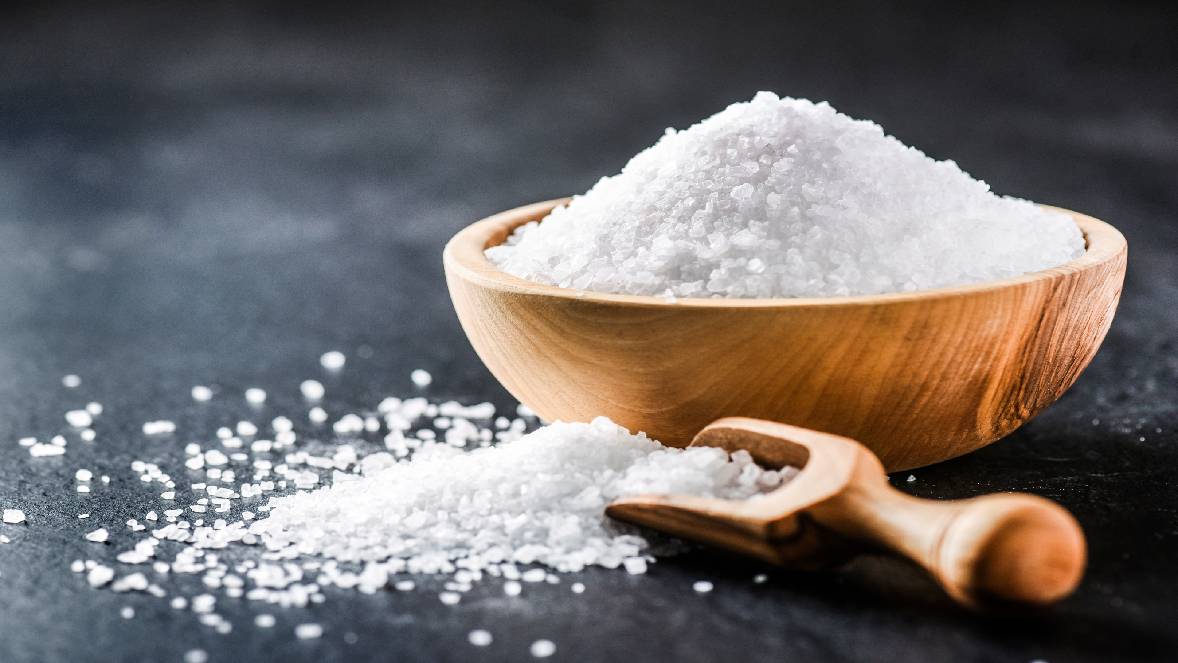
You are what you eat! These days, many people have become more health conscious, and some suggest a low-sodium diet. Although sodium is an essential element to keep our body working properly, excess sodium may affect kidney and cardiovascular health. In this article, Channel 823 shares the need-to-know facts about a low-sodium diet, topped off with a “3 Low” (low-fat, low-salt and low-sugar) sweet and sour pork recipe. Let's cook well and stay healthy together!
Many health-conscious consumers think high-sodium foods taste “heavy”, so they try to avoid them. Nevertheless, most of the sodium in your diet comes from foods you might not think of as salty. Sodium can be added into any foods in the form of food additives, causing people to fall into the sodium trap unwittingly.
During food processing, food manufacturers add salt or sodium-based food additives to enhance flavour and extend shelf life. All this excess sodium intake raises health concerns. For example, just 100 grams of udon contains 980 milligrams (mg) of sodium, while bread and ready-to-eat cereals, which are common breakfast choices, have 420 and 300 mg of sodium per 100 grams respectively. Even “healthy” salted crackers contain from 570 to 670 mg of sodium per 100 grams.
The World Health Organization recommends a maximum sodium intake of 2,000 mg daily (i.e. slightly less than a level teaspoon of salt) for adults. Excessive salt intake can increase the risk of high blood pressure, stroke, cardiovascular disease and oedema.
Many foods are naturally low in salt, so we use seasonings to enhance their taste when we cook. We have been told that “salt” is “sodium” for decades, so we always look for alternatives like chicken powder and soy sauce. A cooking show once implied chicken powder is a healthy salt substitute with less sodium! Meanwhile a lot of advertisements claim that naturally brewed soy sauce is a flavourful ingredient made from fermented soybeans, salt, water and wheat, resulting in lower sodium levels. Is this really so?
Salt
Salt consists of sodium chloride, retaining healthy materials like sodium, chlorine and potassium ions for enhancing the movement of nutrients between tissue fluid and cells through osmosis. One gram of salt contains approximately 400 mg of sodium, and a person should not consume more than 1/3 teaspoon of salt per meal.
Soy sauce
Natural soy sauce is made from fermented soybeans, salt, water and wheat. Every 5 ml of soy sauce contain 250 mg of sodium. Though it may not seem much, we may eat too much sodium if we obtain it from other foods. Each person should not have more than one tablespoon of soy sauce per meal.
Chicken powder
Chicken powder is mainly made of several kinds of flavour enhancers, and some also contain MSG. Each 100 gram serving of chicken powder contains 16,980 mg of sodium, which means each person should not have more than one teaspoon of chicken powder per meal. Although chicken powder has less sodium than salt, using more chicken powder for dishes will result in a more sodium-rich meal in the end.
None of these three seasonings are low in sodium. You may choose spices and herbs, which are natural and have low-sodium content like ginger, spring onions, garlic, and chilli. Parsley, lemongrass, thyme, rosemary, sweet marjoram, bay leaves and mint leaves can be used for exotic and Western cuisines. No matter what type of seasoning is used, nutritionists suggest controlling the amount of seasoning used to a maintain low-sodium and healthy diet.
Tasty sweet and sour pork is among some of the most well-known Cantonese stir-fry dishes. You can try this delicious “3 Low” (low-fat, low-salt and low-sugar) recipe of sweet and sour pork to enjoy a healthy meal. We have also included a list at the end of this article of the recommended daily dietary intake for oil, salt and sugar. Eating too much or too little oil, salt and sugar can be harmful and unhealthy. We should control the amount we use regardless of the type of seasoning.
|
Ingredients (For 4 people) |
Marinade Ingredients |
|
Pork fillet – 500 g |
Ketchup – 3 tbsp |
|
Onion – 1/2 pc |
Apple cider vinegar – 1 tbsp |
|
Red bell pepper – 1 pc |
Sugar substitute – 4 tsp |
|
Green bell pepper – 1 pc |
Water – 1 tbsp |
|
Yellow bell pepper – 1 pc |
|
|
White pepper – 1/2 tsp |
|
|
Low-sodium soy source – 1 tsp |
|
|
Cornstarch – 2 tsp |
|
|
Oil – 2 tsp |
Steps
Original posts on Link’s Facebook page:
https://www.facebook.com/HKfresh/posts/4524096581051853